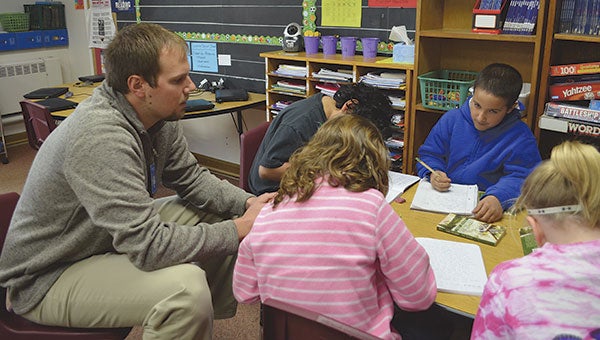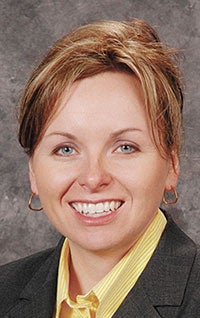Austin schools to focus more on technology, reading
Published 12:19 pm Tuesday, April 15, 2014

Teacher Erik LaRock works with fourth-grade students on a reading assignment at Neveln Elementary School Monday. Austin Public Schools officials are emphasizing technology and reading as elementary goals.
Trey Mewes/trey.mewes@austindailyherald.com
Austin elementary students will get more access to technology next year.
Elementary school principals say there could be three to four more laptops in each Austin classroom next fall, in part to align with I.J. Holton Intermediate School practices and also to get students accustomed to technology.
“We’re going to be infusing many more laptop computers, the same that I.J.’s using, into those classrooms,” said Neveln Elementary School Principal Dewey Schara. “We want those first- through fourth-graders to get access to the same machine they’ll get when they go to I.J.”
Each I.J. Holton student has a laptop, which they are responsible for and work with in class and at home.
Elementary principals summarized the district’s elementary strategic goals to the Austin Public Schools board Monday night, which included more focus on reading, collaboration throughout the district and increasing parent involvement in a student’s school life.
The district is also making more efforts to provide reading intervention for students who need it, through more intervention staff, more teacher training, and more intervention time.
“A huge focus at the elementary level is to really improve the reading scores of all of our students,” Woodson Kindergarten Center Principal Jessica Cabeen said.
The district has also slightly changed parent-teacher conferences. Staff will now meet with families in the fall after students have taken the first of three benchmark tests over the school year, so teachers can more easily pinpoint where students struggle and discuss solutions with parents.
Part of the district’s plans for the future include more technological access for students, some of whom don’t have ready access at home. About 57.4 percent of Austin students receive free or reduced lunch and many of those students don’t have access to technology at home, according to officials.
“We have to make sure that every kid has equitable access to this technology, so every kid is learning how to use the same machines they’re going to get when they go to I.J., whether they have Internet at home or not,” Schara said.
That doesn’t mean students are using technology for the sake of technology, however.
“It’s not a matter of throwing devices at something,” Schara said.
Principals say students work with more than just one type of device, as they may also use computer tablets or iPhones. The varied access is important as students can learn through technology.
Schara said elementary students currently use laptops throughout the district at least twice a week.
Other district goals include increased attention on elementary gifted and talented programs, and more focus on writing and communication skills for students.






